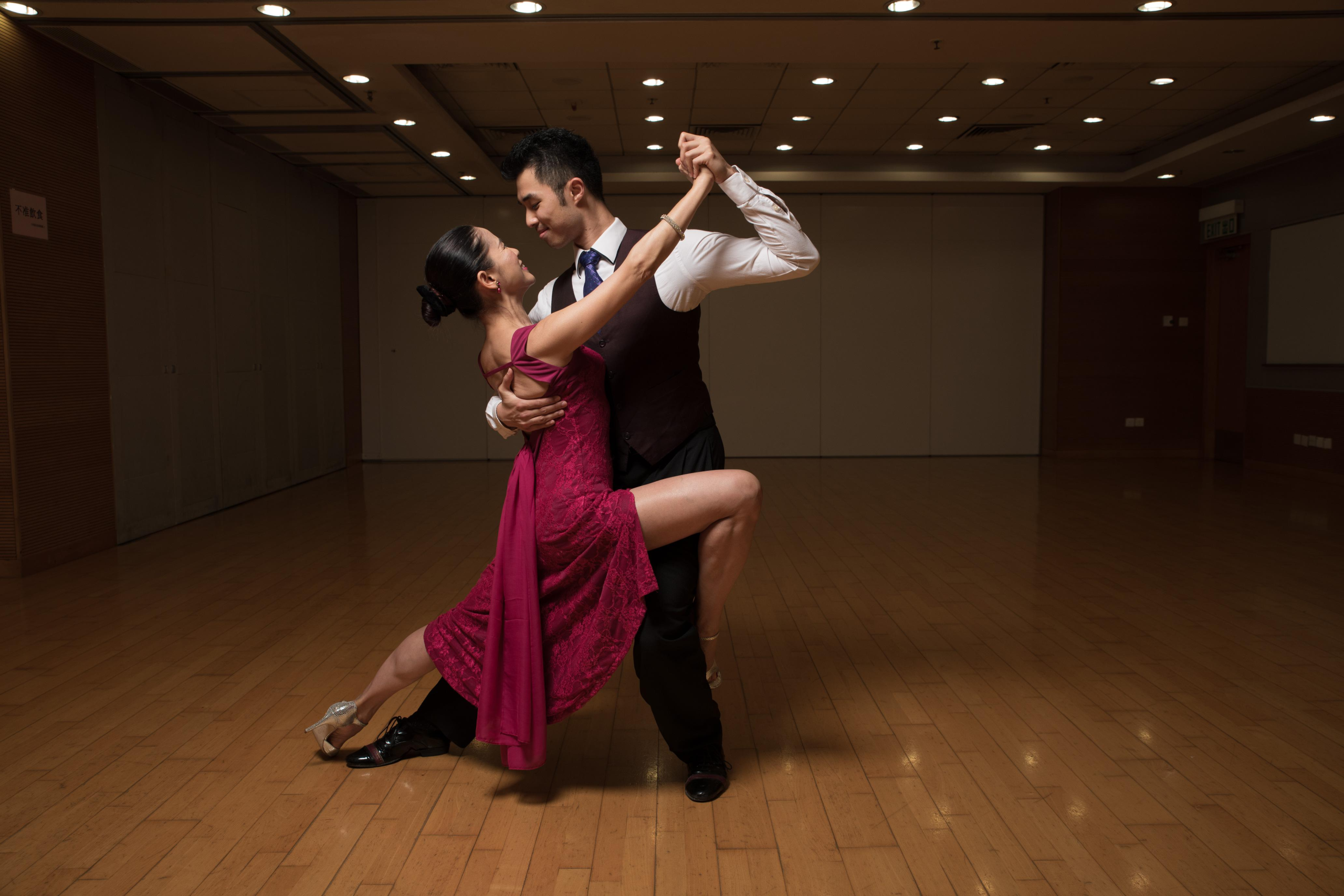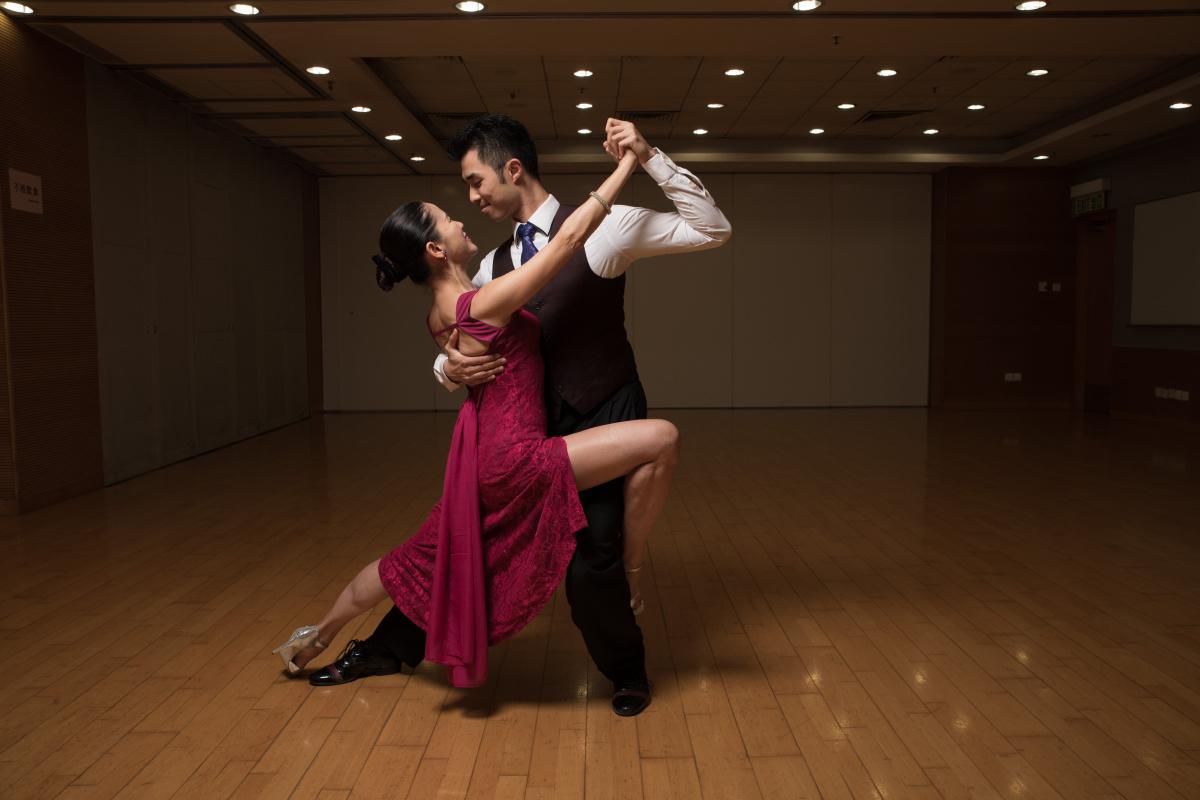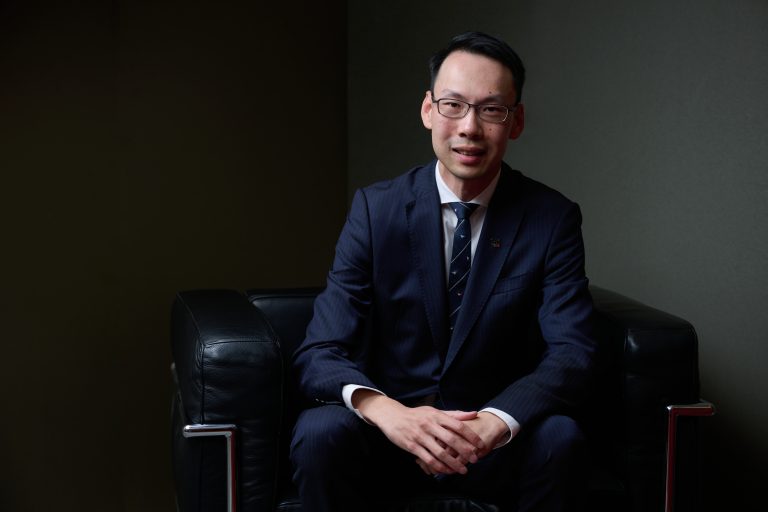Dancing closely with a stranger isn’t as simple or awkward as some people think. In fact, it requires as much coordination, trust and teamwork as any other demanding sport or hobby. Institute members discuss the inner workings of dancing with a partner, its health benefits and how everyone, especially Institute members should try it at least once, writes Jeremy Chan
Photography by Calvin Sit
Cynthia Chan and her dance partner Ronald Ho
The idea of intimately spinning and twirling around with a total stranger after work completely put Cynthia Chan off – it would put anyone off – but she thought she would give it a go anyway.
Chan fervently speaks about her love for the intricate dance, its challenges and the synergy experienced between two dance partners. It all started when she noticed the Institute offering beginner dance classes. She immediately signed up, and from there, found a place to strap on her dancing shoes, polish her moves and network with like-minded individuals. She had always dreamt of being a dancer. “I watched many dance performances as a young child, and fell in love with them because I wished I was there,” she says. As with most parents, her mother wanted her to concentrate on her studies,“ so that dream didn’t come true at the time,” she adds.
Following graduation and then employment, she dedicated her free time to dancing at various studios around Hong Kong. With her CPA exams and master of business administration degree taking up a large portion of her time, she had to find a way to manage work and life – or in her case, work and dance.
Her current schedule now involves working during the day, two weeknights of jazz dancing a week and Argentine tango every Saturday morning.
Shift in perspective
She cites Argentine tango as her choice of swing. Known for being a close-contact and complex form of partner-dancing, Chan was hesitant to try it out at first. “The close embrace is the main point of it, and it’s different from what I learnt in Latin, jazz and ballroom dancing,” she states. Attending the classes shone a new light on its unique style and her attitude towards it changed completely after just a few lessons. “After several months, I felt it was quite interesting – and I loved it.”
The slow movements, musicality, combined with the close embrace, made dancing with a partner quite romantic – though challenging, she states. “It demands a very close connection between two people, since men take the leading role and ladies take the follower’s role.” She jokes that because of this format, the women don’t usually have to memorize as many steps, but have to be prepared for the moves their partner might throw at them. “One thing I had to overcome was his height – he is quite tall and I’m quite short. I need to stand very straight, so it helps to have good posture,” she adds.
Chan points out that men need to know how to simultaneously direct their companion and the dance itself, while keeping aware of other dancers on the dance floor. Women need to concentrate on their partners, follow their steps and mirror that energy. It was this rapid and precise level of dance teamwork that further piqued her interest, leading her to seek out additional classes.
Many of her friends at the Institute had decided to start taking classes with her at OTROTango Dance Studio in Jordan, which specializes in Argentine tango. It was here she met her dance partner, Ronald Ho. She noted that while many students attended these classes mainly to meet new people, Ho genuinely wanted to learn this special dance, just like her. “I thought he was quite outstanding, and he certainly had a talent for it, since he learnt the moves really quickly,” she recalls. Ho feels the same way as Chan, adding “when I first started learning tango in early 2016, Chan was a very helpful and caring dancer in class, and we found it comfortable to dance with each other. In April 2017, it was the Hong Kong Tango Championship – we saw it to be an opportunity to improve, so we partnered to compete.” It was their first competition together, and their training had paid off, as they reached the finals. They were both very excited as they didn’t expect they could get that far, as they were relatively new to the tango community. They were then invited to perform on stage at the Institute’s Annual Dinner in December 2017.
“Don’t be shy if you are dancing with others who have danced for years – every beginner starts at zero.”
Chan stresses the importance of dedicating time, as being busy didn’t deter them from meeting for dance classes. She emphasizes that “when you make a promise to meet, you need to spare that time.” She believes that attitude and commitment are deciding factors when it comes to dancing well together. She goes on to say that frustration can arise when trying to perfect a particular move, though this is an expected challenge. She and her partner both agree that partner-dancing is an evolving process that takes time. They both appreciate how they learn, improve and solve problems together.
Ho adds that there are certain magical moments in dancing, such as how Chan is able to understand how to respond to slightly varied moves posed by him, especially when they are led differently.
Chan thinks back to when she met her friend Simty Yau, Convenor of the Institute’s Dance Interest Group. Yau was equally as captivated by dancing as her, having fallen in love with it at a young age. She started in secondary school, where she learnt oriental and folk dance, and following graduation, enrolled herself in private classes. She began studying for her degree and then moved onto becoming a CPA. That was when she also stumbled upon the ballroom dancing classes offered by the Institute. There, she met Chan, and her current dance partner Victor Yeung in the Latin dance class.
They both worked their way up the three levels of distinction – associate, licentiate and fellowship, the last one being the highest level of qualification. Similar to Chan and Ho, Yau and her partner Yeung acknowledged that preparing for dance exams was the quickest way to improve. She was surprised that Yeung was, familiar with both male and female dance moves, which proved to be an advantage in guiding her when she encountered difficulties.
The perfect pair
Yau also believes that dancing with a partner is much more challenging, as it requires more cooperation between two people, as well as more skill and technique. She observes that some of the moves are easy to do alone, but when done together, are very difficult as it is crucial for both dancers to react to visual and physical leads.“For example, when he puts his hands up, I know it is time to start,” she explains. “If my partner doesn’t look at me, we both won’t know what happens next.” She exemplifies, saying that “sometimes, the lady needs to give way for the man to pass so the move can be done smoothly.”
When it comes to finding the right dance partner, it isn’t as easy as walking into a class and dancing with the first person you see, either. Her dance partner once said, “there is a saying in the dance circle, that finding a suitable dance partner is more difficult than finding a spouse.”
Yau recalls her most memorable performance was their first ballroom dance competition together. Knowing that there were other dancers on the dance floor, she was worried about accidentally knocking into them during the routine. “I was thinking about how Victor would lead me during the dance, so I reminded myself that as a lady, I just have to follow,” she jokes. “We passed, and came in second place.”
Though many people claim to be too busy or simply not good enough to dance, Yau remarks that there are numer- ous reasons why Institute members ought to pick up dancing. “Dancing is like a sport – it will improve your health and keep you fit. I’m not young anymore, but I continue to dance because I want to keep my body healthy, and I always tell people that if you dance you can look at least ten years younger!”
Both Chan and Yau speak very highly of the beginner classes offered by the Institute, emphasizing that people of all abilities and levels are encouraged to join, regardless of how busy one is. “There are three classes every week, and jazz classes are on Saturday mornings so it won’t affect your work. You are free to join up to five interest groups at the Institute, and if you happen to not like one, you can change next year,” Yau says.
Chan stresses that people really shouldn’t worry about their lack of abilities as a dancer when starting. “Just be patient, and don’t be shy if you are dancing with others who have danced for years – every beginner starts at zero.” As with all things in life, practice makes perfect – especially in partner dance.
Members interested in dancing can join the Institute’s dance interest group. For more details visit the Institute’s website.














